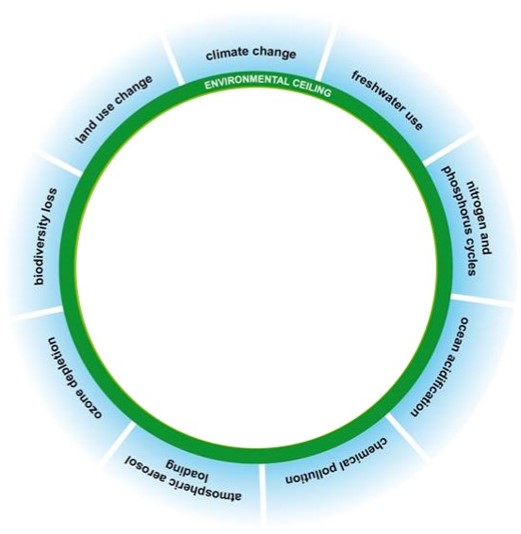The ecological ceiling consists of the main boundaries of our ecosystem, which we should respect to maintain a healthy planet. What do Economics students need to know about the ecological ceiling? Is there any overlap with the economic concepts you teach today? How is the way you teach these concepts affected by the Doughnut Framework?

The ecological ceiling covers 9 dimensions, which coincide with the planetary boundaries of the Stockholm Resilience Centre. We believe these dimensions are not set. Scientists may yet uncover other boundaries in the future. Notice also how these dimensions can be assessed seperately, while the causes of overshoots are often strongly related. How would you address this in your classroom?
We believe that the ecological ceiling stretches the concept of economic scarcity. We still have to deal with the allocation of resources, but we also have to deal with existing or future physical scarcities. How does this affect the way you teach economics?
For simplicity reasons, the economic system is often presented as the money cycle. In her book, Doughnut Economics, Raworth embeds the economic system in the ecological system. How does this affect the economics you teach today?
What do economics students need to know about the ecological systems? Do students need to know the basic biogeochemical cycles? Do they need to know how ecological systems are interconnected and how they are connected to the economy?
When we teach economics, we also discuss measures for economic performance. How useful are these from a Doughnut perspective? Should students learn about the indicators of ecological health?
Externalities are explicitly not external to the Doughnut Framework. They cannot be, since they are inherent to the economic system. How much should students understand of cause and effect within the economic system? How does this insight affect how you teach economics today?
The ecological ceiling and the social foundation are not two seperate entities. As with so many things in our modern world, they are interconnected. How do we prepare students to deal with all kinds of interdepencies now and in their future?
Would you like to read some of our answers to these questions and get inspired along the way? Then read our blogposts on the ecological ceiling.
